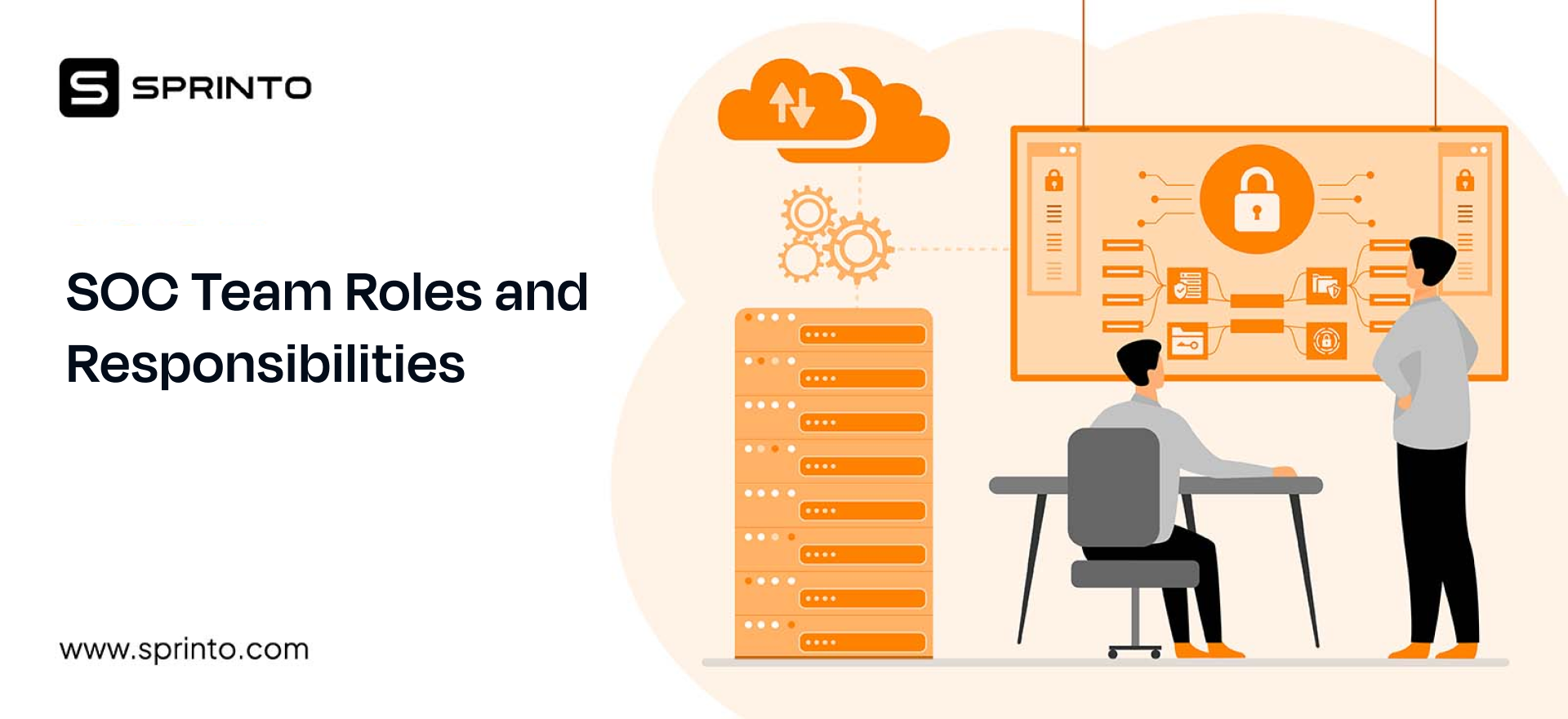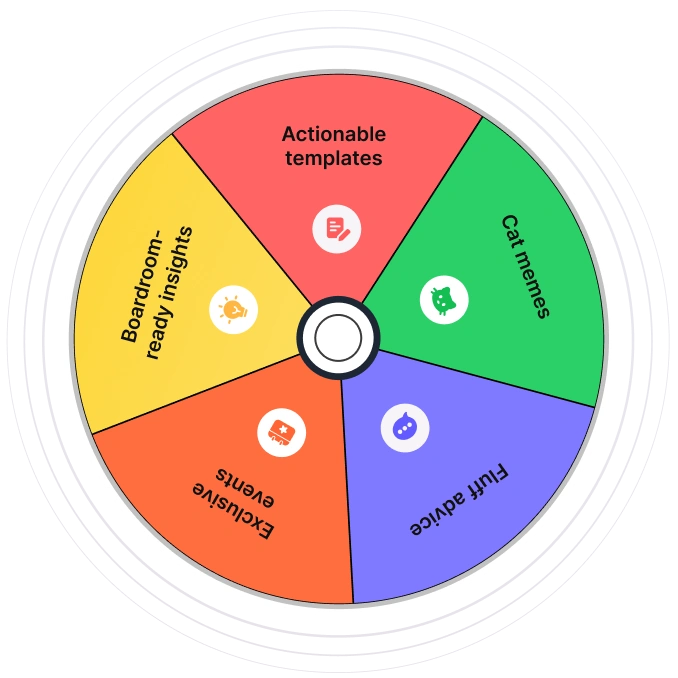Organizations face a constant barrage of cyber threats and newly discovered vulnerabilities every day. As technology infrastructures grow more complex, the burden of defending against these threats falls squarely on the shoulders of the Security Operations Center (SOC) team.
For SOC teams, this constant stream of threats is part of everyday life. But with limited time and resources, how do they stay on top of it all? Who decides what gets prioritized, escalated, and monitored?
To answer that, you need to understand the SOC team’s roles and responsibilities—how they’re structured, what they’re tasked with, and why their work is critical to an organization’s security posture. Let’s break it down.
📋 Quick Summary in 60 Seconds
Benefits of Defining SOC Team Roles:
- Ensures clear ownership for monitoring, detection, and response activities.
- Improves coordination, accountability, and overall security posture.
- Helps maintain compliance readiness and faster incident handling.
Challenges Organizations Face:
- Overlapping responsibilities and unclear reporting structure.
- Skill gaps or resource limitations in specialized roles like threat analysis or compliance.
- Difficulty aligning daily operations with compliance and audit expectations.
How Sprinto Helps:
- Provides ready-to-use frameworks for defining SOC roles and responsibilities.
- Automates monitoring and reporting, reducing manual effort for compliance teams.
- Keeps SOC operations aligned with frameworks like SOC 2, ISO 27001, and HIPAA.
- Build a well-structured, audit-ready SOC team with streamlined compliance — book a Sprinto demo.
What is SOC?
SOC or Security Operations Centre is a team of cybersecurity experts that act as the command center for protecting an organization’s assets, infrastructure, and information. They monitor, detect, analyze, and respond to incidents across the IT infrastructure.
In today’s digital landscape, a SOC is crucial for protecting an organization’s data, systems, and reputation from increasingly sophisticated cyber threats. The effectiveness of a SOC can significantly impact an organization’s ability to prevent, detect, and respond to security incidents.
Types of SOC models
Based on how SOC is built and managed, SOC teams are modeled in 3 types:
1. In-House SOC team
An in-house SOC is fully built and operated internally by the organization. This model provides complete control over security operations, customization of tools and processes, and close alignment with internal teams like IT, DevOps, and compliance. It’s ideal for large enterprises or highly regulated industries where deep infrastructure visibility and tight security integration are critical. However, in-house SOCs are resource-intensive and require significant investment in talent, training, tools, and 24/7 staffing, making them challenging for smaller teams to maintain.
2. Outsourced SOC team
In an outsourced SOC model, a third-party Managed Security Services Provider (MSSP) or Managed Detection and Response (MDR) vendor is responsible for security monitoring and incident response. This is a cost-effective option for organizations that lack internal resources or need rapid deployment of security capabilities. Outsourced SOCs offer round-the-clock monitoring, access to experienced analysts, and scalable services. However, they can suffer from limited visibility into your internal environment, potential communication gaps, and less tailored incident response.
3. Hybrid SOC
As the name suggests, A hybrid SOC combines internal resources with outsourced expertise, offering the best of both worlds. Some organizations may choose to keep some core functions in-house while outsourcing others. Organizations may keep core functions in-house—such as strategic threat analysis or incident response—while outsourcing areas like 24/7 monitoring, log aggregation, or threat intelligence. This approach allows teams to scale efficiently while maintaining control over critical security decisions. Hybrid SOCs offer great flexibility, faster ramp-up, and a pathway to eventually building a full in-house SOC.
What does a SOC team do?
At a high level, the SOC team is responsible for maintaining their security monitoring tools and investigating suspicious activities that get flagged in the organization’s business environment.
On a daily basis, this could range from conducting training sessions to educate their employees on the latest security breaches and the best practices to prevent them from occurring to actively monitoring their security posture to prevent security incidents.
1. Maintaining Security Monitoring Tools
SOC teams rely on security tools to monitor their organization’s business infrastructure across cloud and on-prem assets. The SOC team reviews the security logs from these tools through a SIEM (Security Information and Event Management) tool to get insights on any new vulnerability(s) that arise.
Their chain’s weakened links (vulnerabilities) are fixed to restore their security posture to desired efficiency levels.
2. Investigates Suspicious Activities
The SOC team relies on security monitoring tools and SIEM platforms to monitor their business environment for malicious activity. If malicious activity is flagged, the team investigates the activity.
If the activity poses a security threat, the threat is neutralized, and the learnings are shared with the team to spread awareness of the current security threats and best practices.
These investigations are often successful when the team has experienced security experts leading the studies and is provided with the latest tools to get ahead of the threat.
3. Threat intelligence and proactive defense
SOC teams don’t just respond to threats; they anticipate and prevent them. This includes referring to external threat intelligence feeds, identifying emerging vulnerabilities, and correlating threat patterns with the internal environment. These teams also use SIEM platforms and threat detection tools to simulate attacks (e.g., red teaming, tabletop exercises) and develop playbooks for incident response.
4. Compliance and reporting
An often overlooked role of the SOC team is helping the organization stay compliant with security standards like SOC 2, ISO 27001, HIPAA, and others. This involves keeping records of security controls, preparing audit-ready evidence, and supporting teams during audits.
These teams use automation tools like Sprinto to continuously monitor compliance status, use the built-in reporting features and minimize any manual tasks.
Overview of SOC team hierarchy
A Security Operations Center (SOC) follows a tiered structure to handle threats efficiently and ensure round-the-clock protection. Each tier has clearly defined responsibilities, from real-time monitoring to strategic oversight and compliance
Tier 1 – Security analyst (monitoring and triage)
Tier 1 analysts are the frontline defenders. They monitor alerts from security tools, review logs, and filter out false positives. When they detect something suspicious, they triage the incident, gather basic context and decide if it needs deeper investigation. Their main goal is to quickly spot and escalate real threats.
Tier 2 – Incident responders (investigation and containment)
Tier 2 responders take over when a potential threat is confirmed. They dig deeper into the incident to understand what happened, how it happened, and what systems are affected. They contain the threat to prevent further damage and may coordinate with IT or engineering teams to remove malicious activity or patch vulnerabilities.
Tier 3 – Threat hunter (proactive security and forensics)
Tier 3 analysts proactively search for hidden threats that haven’t triggered alerts yet, to uncover advanced attack patterns. They often use threat intelligence, behavioral analytics, and deep forensic analysis and help build better detection rules.
SOC Manager/director (strategic oversight and compliance)
The SOC Manager or Director oversees the entire security operations function. They define strategy, manage resources, ensure processes align with business and compliance goals, and report security posture to leadership. They also ensure the SOC stays audit-ready and compliant with industry standards.
5 Signs your Organization needs a SOC Team
A Security Operations Center (SOC) isn’t just for large enterprises anymore. As your organization grows, matures its digital infrastructure, or expands its threat surface, a dedicated SOC becomes a strategic asset. Here are the top five signs it’s time to build or adopt one:
1. Advancing along the security maturity curve
If your organization is transitioning from Level 1 (Initial phase of security) to Level 5 (Optimizing for scale), it is time to consider establishing a SOC team. As your security posture matures, with more defined processes, enterprise-wide risk management, and growing technical infrastructure, the need for centralized security monitoring, detection, and incident response becomes critical.
2. Handling sensitive or regulated data
If your organization manages sensitive data or is subject to compliance standards like PCI DSS, SOC 2, HIPAA, or ISO 27001, a SOC is essential. Regulatory obligations and customer trust depend on continuous monitoring, log management, and effective incident response.
3. Industry expectations require it
SaaS, financial services, healthcare, and eCommerce face strict security and compliance demands. Enterprise and government clients often expect SOC capabilities. A mature SOC helps meet these expectations and strengthens your market position.
4. You’ve faced a security breach or close call
A breach, ransomware attack, or insider incident highlights gaps in detection and response. Without a SOC, threats often go undetected or unresolved. A SOC helps contain future incidents quickly and effectively.
5. You’re scaling rapidly or in the Fortune 500
As your organization grows in size, revenue, or global presence, security operations must keep pace. A SOC supports expanding infrastructure, new markets, and evolving threat landscapes with structured, scalable defense.
In-house vs. Outsourced SOC: Which is better?
If you’ve realized that you need an SOC, the next question is whether you want an in-house or external SOC. As with any crucial outsourcing decision, it depends on your organization and its requirements, but we’ll help you understand the factors at play.
In-house
It is best suited for organizations that prioritize complete control over security operations and have the resources to build and maintain a dedicated team. This approach allows for tighter integration with internal systems and more tailored threat detection and response.
Pros:
- Full visibility and control over data, workflows, and incident response
- Deep alignment with organizational context, priorities, and infrastructure
Cons:
- High cost of staffing, tools, and maintaining 24/7 operations
- Longer setup time and requires ongoing investment in expertise and infrastructure
Outsourced / External
This one is a strong option for organizations that need robust security coverage without the overhead of building a team in-house. Managed security providers offer rapid deployment, expert analysts, and 24/7 monitoring, making this model especially attractive to startups or lean teams focused on compliance.
Pros:
- Faster implementation with access to specialized expertise and tooling
- Lower operational burden and cost compared to maintaining an in-house team
Cons:
- Limited visibility into internal systems may reduce context for threat response
- Requires strong vendor alignment and trust to avoid gaps in coverage or delays
Top 4 tips to have the best SOC team
Four effective tips to build the best SOC team are:
1. Encourage continuous learning: Companies with security certifications experience 53% fewer security incidents, according to a Cybrary report. Set up regular internal workshops and get your team to security conferences.
2. Document details of incidents: When a breach hits, every second counts. So, create detailed playbooks for different scenarios and make sure everyone knows their role inside out. Run regular drills. Companies that test their incident response plans save a lot in breach costs, according to IBM.
3. Embrace automation: Implement a solid SIEM system and leverage machine learning for threat detection. However, tools are only as good as the people using them. Use automation to free up your team for the complex, creative problem-solving that machines can’t match.
4. Break down silos: Build strong relationships across your organization – IT, development, business units, the works. Regular communication with leadership is key for high levels of cyber maturity.
Conclusion
Security operations center teams are expensive, and the SOC roles and responsibilities often get assigned to a CTO or a CISO, depending on the size and maturity of the organization. SMBs and startups need help allocating funds to deploy expensive security tools to gain visibility on their security posture. The lack of visibility often is the root cause of their security incidents.
Sprinto enables a layer of visibility by enabling organizations to monitor their security posture by mapping applicable activities to compliance. In addition, our automated tools help organizations identify areas not aligned with the compliance standards and immediately deploy remediation methods.
Sprinto automatically grades the instance based on the severity to ensure that your organization addresses the tasks that need immediate attention.
Contact us for more details on how you can enable this layer of visibility in your organization while becoming compliant with security and privacy frameworks like SOC 2, ISO 27001, HIPAA, CCPA, GDPR, and 15 others.
FAQs
How many people are on a SOC team?
A SOC team generally consists of a Security Analyst, Security Engineer, Security Manager, and CISO (Chief Information Security Officer).
What should be the SOC team structure?
A SOC team structure should be headed by a CISO or a Director of Security. Their job would be to implement the overall security strategy. The analysts, engineers, and managers report to the head of security to implement the strategy.
What is a SOC role?
A SOC role is a position within a Security Operations Center team. These roles are crucial for maintaining an organization’s cybersecurity posture. Typical SOC roles include Security Analysts who monitor and investigate alerts and Incident Responders who handle active security breaches.
What is a SOC management team?
The SOC management team is responsible for the overall direction and performance of the Security Operations Center. This team typically includes roles like SOC Director, Senior Security Manager, and Team Leads. They handle strategic planning, resource allocation, and team leadership.
What is a SOC tool?
SOC tools are technological solutions used by security teams to detect, analyze, and respond to cybersecurity threats. Key examples include SIEM (Security Information and Event Management) systems for log collection and analysis, EDR (Endpoint Detection and Response) for monitoring endpoint devices, and SOAR (Security Orchestration, Automation and Response) platforms for automating security workflows.
Vimal Mohan
Vimal is a Content Lead at Sprinto who masterfully simplifies the world of compliance for every day folks. When not decoding complex framework requirements and compliance speak, you can find him at the local MMA dojo, exploring trails on his cycle, or hiking. He blends regulatory wisdom with an adventurous spirit, navigating both worlds with effortless expertise
Explore more SOC 2 articles
SOC 2 Compliance Overview
SOC 2 Preparation and Documentation
SOC 2 Audit and
Reporting
SOC 2 Differences and Similarities
SOC 2 Updates & Management
SOC 2 Industry-Specific Applications
research & insights curated to help you earn a seat at the table.








